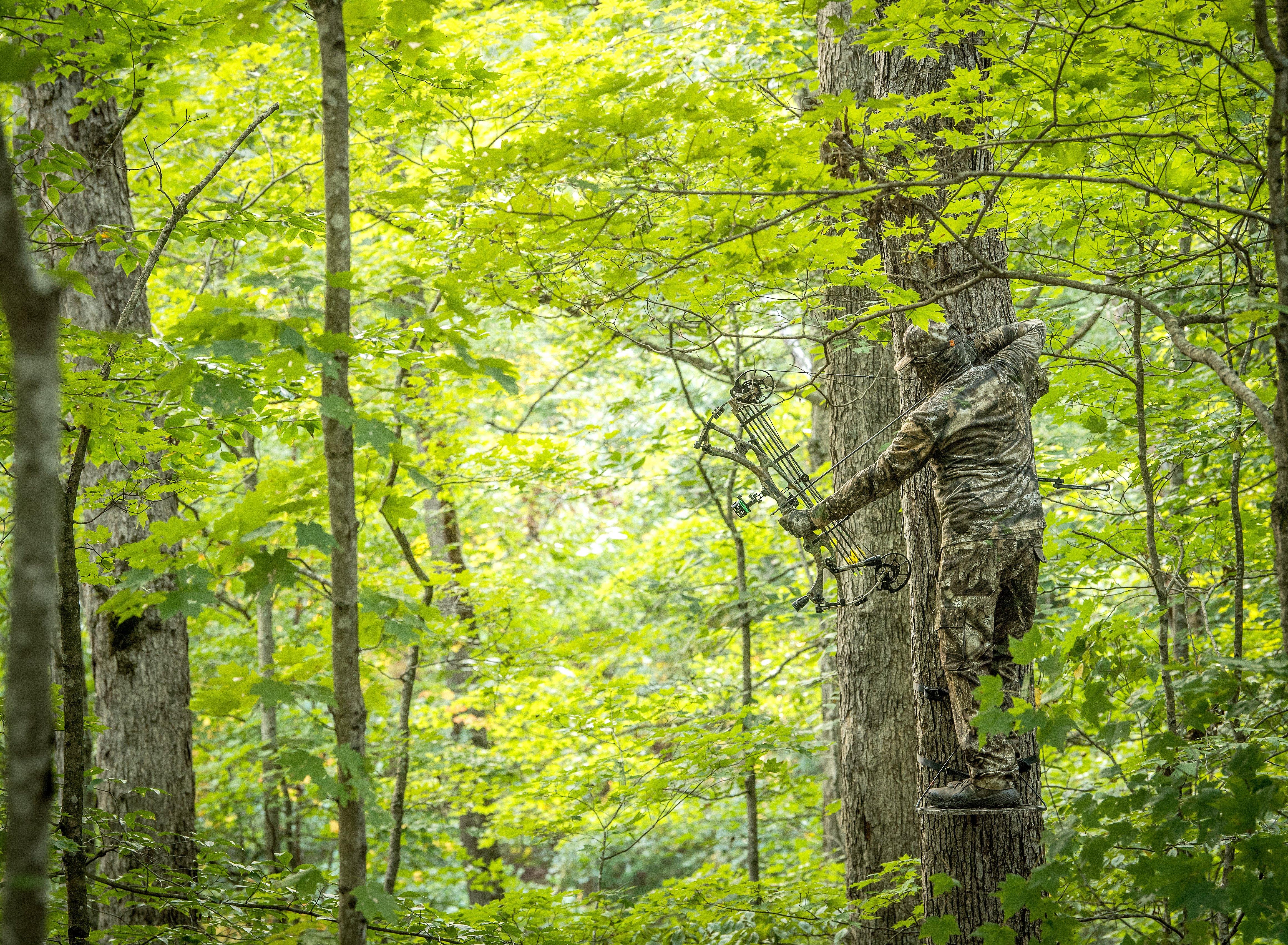Learn how deer use the landscape to get sure-kill close to a buck long before the rut

In many areas, whitetails maintain consistent patterns during the early bow season. Take advantage of these to score early. Photo by Bill Konway.
One September morning in Montana, I froze as an 8-pointer trotted toward me through the cottonwood trees. He was moving fast, trying to get back to his bed along the Milk River before the sun got too high.
Something flashed behind him — a 10-pointer pushing 150 bringing up the rear. The woods were flat as a pool table and pretty open, but I wasn’t too worried, even though I was eyeballing the impressive pair from behind a tree on the ground. The bucks stepped into the ditch in front of me and disappeared. I drew my bow and stepped a foot out from behind my hiding tree. When the 8-pointer popped out on my side of the ditch, I ran an arrow through his lungs at 16 steps. Why didn’t I wait for the 10-point giant? I’ll take a gimme shot at a Pope and Young 8 any day, man.
Since that day, some of my best ground sets have involved a good-sized ditch, old creek bed, or dry irrigation canal that runs a long distance through a woodlot. You might get a shot by setting up in a small brush hide on either end of the runway. If you scout the entire length of a ditch or dry creek, you will generally find at least two spots where deer trails come together and funnel across it, and those are killer pinch points to watch. Here are three more deadly setups.
CHECK OUT OUR LATEST CAMO PATTERN: REALTREE APX
THE END RUN
Loggers bulldoze windrows of trees alongside new roads and clear-cuts in the woods. Clearing pastures, farmers often pile logs or brush along edges of the timber. These are the types of linear structures you should look for. Deer can’t walk through the barriers, so they skirt them on either end. Check the ends for a trail that curls around them, and hang a tree stand nearby where the prevailing wind will be right most days.
BANK ON IT
Almost every pond dam or high creek bank, especially in a secluded area, will have one or more deer trails running along it, whether on top of it, down low at the base of the bank, or in both spots. If you can hang a tree stand close to a top trail where the wind drives your scent over a pond, you’ll never get busted. When the situation allows, I love setting up in a small brush blind on the side of a bank and watching the low trail that hugs the base of a pond or creek. This set gives you the elevation of a tree stand but with better ground cover. It’s an especially good morning spot where rising thermals will help carry your scent up and away.
Don’t Miss: 50 Bowhunting Tips for 2024
POINT OF TIMBER
A good-sized point of timber tucked in the S-curve of a snaking river or large stream is an easy spot to find on an aerial map. I hunted such a spot on the Mouse River in North Dakota one time, and although I didn’t kill a buck, I spent a wonderful week observing dozens of deer use this type of habitat, and watching how six mature bucks moved in and out of the timber point to a bordering alfalfa field. (I was close two times, but just couldn’t get a shot at the big 10-pointer or the 135-class 8.)
If there’s good cover in a point of woods and little hunting pressure, you can bet bucks will bed deep in the grassy timber by the water and filter in and out to and from nearby feed on several trails. It’s a gamble on which trail to hang a stand, though as a rule, I usually choose one where a buck moves to or from the cover with the daily wind in or quartering onto his nose. Set stands at least 200 yards out from a bend in the water so as not to pressure a bedding area. Your best shot in the early season is to hunt for a buck coming out to feed in the evening. Good luck.












